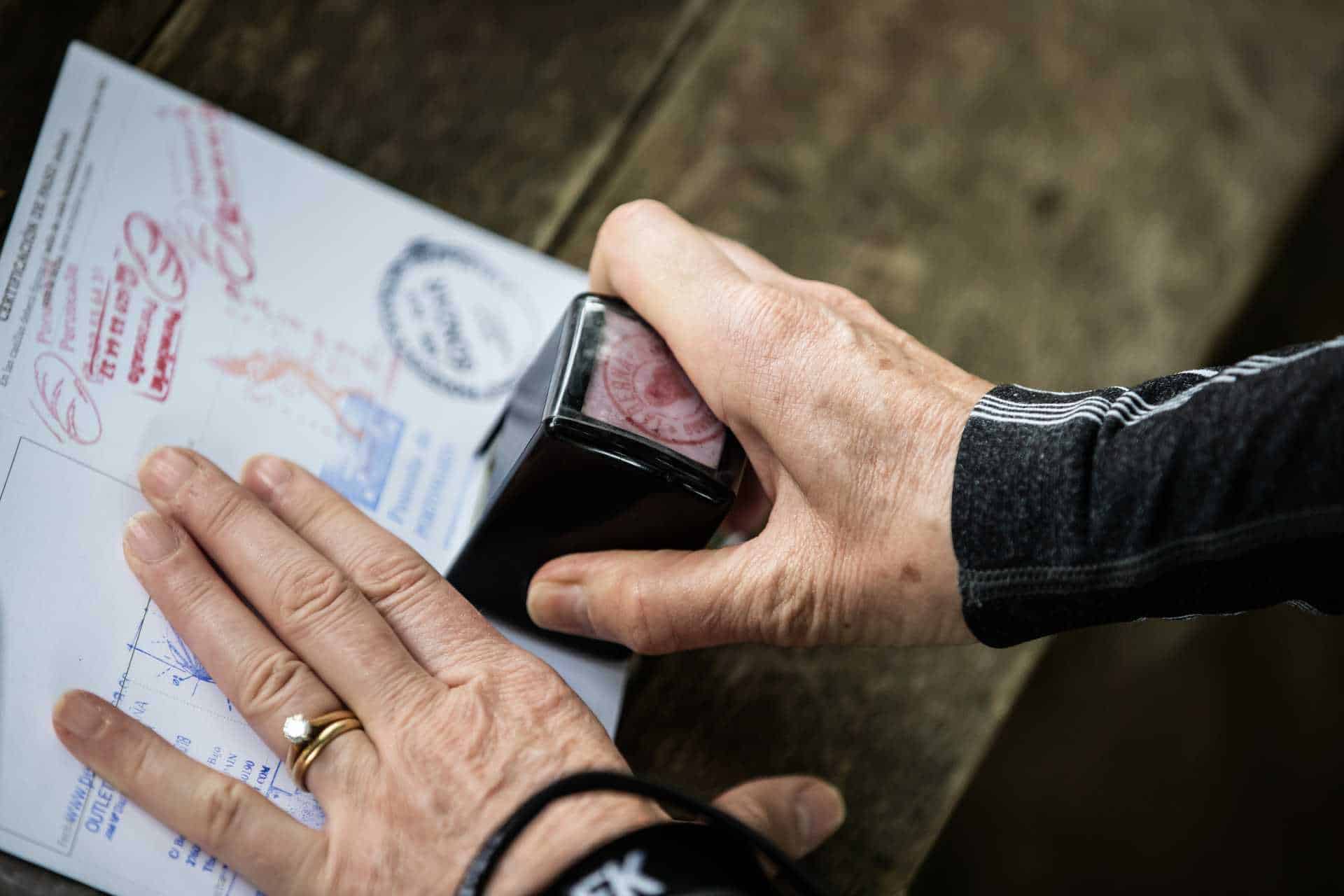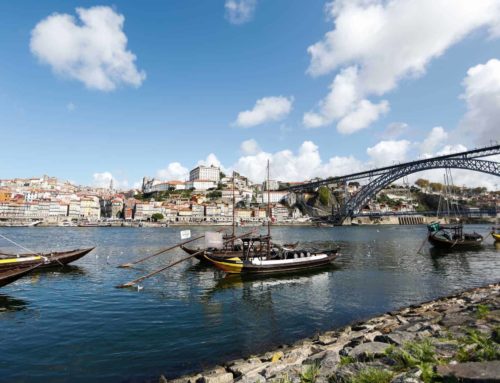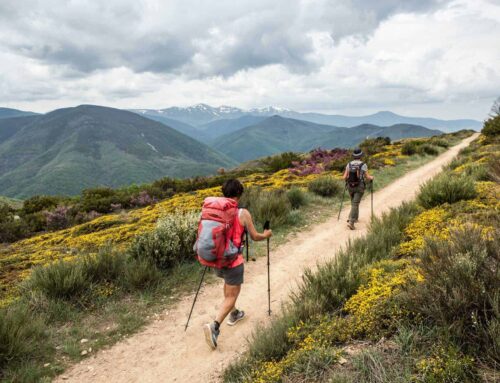The Camino de Santiago
The Way
The Camino de Santiago, or The Way of Saint James, is one of the oldest and most famous pilgrimage routes in Europe. Camino literally means the “way.”
Along with the road to Rome (the Via Francigena) and the road to Jerusalem, the Camino de Santiago was one of the most important Christian pilgrimages during the Middle Ages. Pilgrims came on foot from all over Europe to the Cathedral in Santiago de Compostela in order to receive their plenary indulgence.
Today, pilgrims walk The Way for many different reasons. Some do so to escape from their busy lives and have time to contemplate. Others come to walk to explore a new country or to be part of a unique gathering of people from all around the world. While some of the pilgrims see it as an opportunity to take on a physical challenge. And of course, many pilgrims come to walk to Santiago as part of a religious or spiritual quest. Whatever your motivation to set out on foot is, the experience offers all of the above and more.
The Myth
The historical context of the Camino de Santiago is steeped in myth and legend. This pilgrimage has existed for over a thousand years. As a result there are many differing accounts of how Santiago de Compostela came to be the focus of so many pilgrims. Here is one account.
James, brother of John and son of Zebedee and Salome, was a fisherman on the Sea of Galilee and the fourth of Jesus’ apostles. Before Jesus was crucified, he sent his disciples to spread the word. James was sent to the Iberian Peninsula. Having failed, he returned to Jerusalem. He was beheaded by Herod Agrippa in 44AD. His body was taken and put on a boat made of stone with no sails, oar or crew. It was sent out to sea.
The boat found its way to Padrón, on the Galician coastline in the North-west of Spain. Here the boat was found by some of James´ disciples. They took the body and placed it on a stone. Legend has it that the stone curved to meet the body. The disciples Teodoro and Atanasio searched to find a place to entomb the remains. They asked the local Queen Lupa if they could bury James on her land. In order to be allowed to do so, the Queen set several trials for the disciples. The last one being to harness two wild oxen. The oxen, knowing that the remains of James were holy, became placid and allowed themselves to be yoked. Thus, the men took the body to a hill where he was buried and apparently forgotten for nearly 800 years.
Discovery of the Bones
During this time, the Iberian Peninsula was gradually being Christianised. In the early 9th Century, a Christian hermit called Pelayo was led to the site of the burial by a strange starry light shining on Mount Libredón. He found the bones, which were later authenticated by the local bishop as those of the Apostle James and his disciples, Teodoro and Atanasio. A city slowly grew up around the site. A small chapel was erected and a trickle of pilgrims began to come to the shrine.
The discovery of the relics came at an opportune time for Christian Spain. Most of the Iberian Peninsula was ruled by Muslims. However, with the discovery of the bones, protection and money of Christian Kings and nobles started to pour in. This funding began the infrastructure for the famous pilgrimage.
Statistics
Whilst the popularity of the Way of St James has had peaks and troughs, it has never waned. According to the official poll of the Cathedral de Santiago, in 2018, the Camino saw its highest amount of pilgrims. 327,342 pilgrims reached Santiago de Compostela. Bear in mind, some pilgrims walk the Camino not to reach Santiago or to claim their Compostela. We suspect this number is actually higher each year.
The French Way has remained the most popular route to Santiago de Compostela. In 2018, 57% of the pilgrims walked the Camino Frances. The Portuguese Way had 25% of the pilgrims on it’s trail. The two other main routes were the Northern Way (5.8%) and the Primitive Way (4.6%).

The Credencial
The Credencial, or pilgrim passport, is the modern equivalent of the “letters of safe-conduct.” This was carried by medieval pilgrims and permitted them passage through the different kingdoms they passed along The Way. It also granted them exemption from tolls and certain other fees en route.
Today, the pilgrim passport is a booklet issued by the Camino authorities. It certifies the pilgrim status of the bearer. It is used to collect the official stamps along the way and proves you have walked the last 100km or biked the last 200km to Santiago de Compostela. You will pass through places where you cannot get to by car, which shows you have walked the Camino!

The Credencial
The Compostela
To get the “Compostela,” or Certificate of Completion you must do the following:
- Make the pilgrimage for religious or spiritual reasons, or at least an attitude of search.
- Do the last 100 km on foot or horseback, or the last 200 km by bicycle.
- You must collect the stamps on the “Credencial del Peregrino” from the places you pass through to certify that you have been there. You have to stamp the Credencial twice a day at least on the last 100 km (for pilgrims on foot or on horseback) or on the last 200 km (for cyclists pilgrims).
Pilgrim’s Office
Once you arrive in Santiago de Compostela, you can take your completed Credencial to the Pilgrim´s Office near the cathedral. There you will be asked about your motivation for the pilgrimage. Once the staff are satisfied that you have met the conditions, your Compostela/Certificado is issued. You can buy a cardboard tube to store it in for a small fee. For greater protection you can have it laminated in several bookshops near the Pilgrim’s Office.
There are two documents which contemporary pilgrims may receive upon arrival at the Pilgrim´s Office in Santiago. One is the Compostela, a document written in Latin that confirms the completion of pilgrimages undertaken for religious devotion (pietatis causa) or, minimally, an attitude of spiritual searching. The other is a certificado, or certificate, confirming completion of the journey by those pilgrims who have undertaken the journey for recreational motives – a holiday or as a physical challenge.
Translation
The English translation of the text of the Compostela reads as follows:
“The Chapter of this Holy, Apostolic, Metropolitan Cathedral of St. James, custodian of the seal of St. James’ Altar, to all faithful and pilgrims who come from everywhere over the world as an act of devotion, under vow or promise to the Apostle’s Tomb, our Patron and Protector of Spain, witnesses in the sight of all who read this document, that: Mr/Ms…………………has visited devoutly this Sacred Church in a religious sense (pietatis causa). Witness whereof I hand this document over to him, authenticated by the seal of this Sacred Church. Given in St. James de Compostela on the (day)……(month)……A.D. ………, Chapter Secretary”







[…] of which we will taste on this trip! This small-group walking tour qualifies you to request your Compostela, or certificate of […]
[…] you take your final steps on the Camino de Santiago, leading into the Plaza de Obradoiro, you are walking down the very famous street, Rua de […]